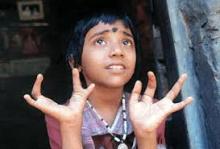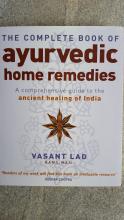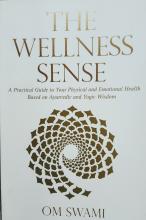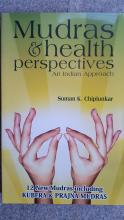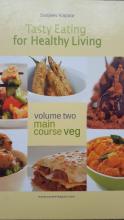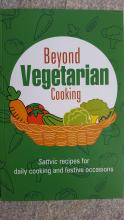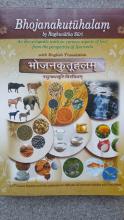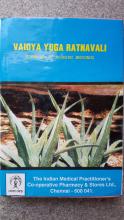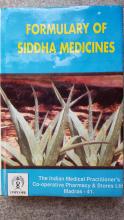Organic Living
ಬೆಳೆಗಳಿಗೆ ಭಯಂಕರ ವಿಷ ಸುರಿಯುವ, ನಮ್ಮಕಣ್ಣು ತೆರೆಸಬೇಕಾದ ಪ್ರಕರಣಗಳು
ರೈತರು ಭತ್ತದ ಹೊಲಗಳಿಗೆ ಎಷ್ಟು ವಿಷ ರಾಸಾಯನಿಕ ಸುರಿಯುತ್ತಾರೆ ಎಂಬುದನ್ನು ೧೭ ಮಾರ್ಚ್ ೨೦೧೮ರ “ಪ್ರಜಾವಾಣಿ” ದಿನಪತ್ರಿಕೆಯಲ್ಲಿ ದಾಖಲಿಸಿರುವ ಒಂದು ವರದಿ: “ಎಣ್ಣಿ” ಉಣ್ಣುವ ಸಂಕಟದ ಕಥನ”. ಮಿತಿಮೀರಿದ ಪ್ರಮಾಣದಲ್ಲಿ ಕೀಟನಾಶಕಗಳ ಉಳಿಕೆ ಇರುವ ಕಾರಣಕ್ಕಾಗಿ ದಕ್ಷಿಣ ಭಾರತದಿಂದ ರಫ್ತಾದ ಅಕ್ಕಿಯನ್ನು ಯುರೋಪ್ ಒಕ್ಕೂಟ, ಇರಾನ್ ಮತ್ತು ಅಮೇರಿಕಾದ ಮಾರುಕಟ್ಟೆಗಳು ತಿರಸ್ಕರಿಸಿವೆ. ಹಸಿಮೆಣಸಿನಕಾಯಿ, ಕೆಂಪು ಮೆಣಸಿನಕಾಯಿ ಮತ್ತು ಕಾಳುಮೆಣಸು ಕೂಡ ಹಾಗೆಯೇ ತಿರಸ್ಕೃತವಾಗಿವೆ.
ಇದರ ಮೂಲ ಹುಡುಕಿಕೊಂಡು ಹೋದ ವರದಿಗಾರ ಶರತ್ ಹೆಗ್ಡೆ, ಕೊಪ್ಪಳ ತಾಲೂಕಿನ ಅಗಳಕೇರಾದ ರೈತ ಹನುಮಂತಪ್ಪನನ್ನು ಭೇಟಿಯಾಗುತ್ತಾರೆ. ಪ್ರತಿಯೊಂದು ರೋಗಕ್ಕೂ ಎಕರೆಗೆ ಒಂದು ಲೀಟರ್ ವಿಷರಾಸಾಯನಿಕ ಸಿಂಪಡಿಸುವ ಹನುಮಂತಪ್ಪ ಹೀಗೆನ್ನುತ್ತಾರೆ, “ಸಸಿ ನೆಟ್ಟು ಎಂಟು ದಿನ ಆಗೇತಿ. ಇನ್ನು ಎರಡು ದಿನ ಬಿಟ್ಟು ಎಣ್ಣಿ (ಪೀಡೆನಾಶಕ) ಹೊಡೀಬೇಕು. ಬೆಂಕಿ ರೋಗ, ಹುಳ ಬೀಳೋದು ಇದ್ದೇ ಇದೆ. ಇಲ್ಲೇ ಎಣ್ಣಿ ಅಂಗಡಿಯಿಂದ ತರ್ತೀವಿ. ಇಂಥ ರೋಗಕ್ಕೆ ಎಣ್ಣಿ ಕೊಡಪ್ಪಾ ಅಂದ್ರೆ ಸಾಕು, ಕೊಡ್ತಾರೆ. ಪ್ರತೀ ಎಕರೆಗೆ ಒಂದು ಲೀಟರ್ ಎಣ್ಣಿ ಹೊಡೀತೀವೆ. ಬೆಳೆ ಬರೋ ತನಕ ಅದೆಷ್ಟು ರೋಗ ಬರುತ್ತೋ ಅಷ್ಟೂ ಎಣ್ಣಿ ಹೊಡೆಯೋದೇ ಹೊಡೆಯೋದು…”
ಅದೇ ಅಗಳಕೇರಾದಲ್ಲಿ ಇನ್ನೊಂದು ಹೊಲದಲ್ಲಿ ವಿಷರಾಸಾಯನಿಕ ಸಿಂಪಡಿಸುತ್ತಿದ್ದ ಅಶೋಕನಿಗೂ ಅದರ ಹೆಸರು ಗೊತ್ತಿಲ್ಲ. ಅವರ ಪ್ರಕಾರ, “ಗಿಡ ಸೊರಗಿದರೆ ಎಣ್ಣಿ, ಕೀಟ ದಾಳಿ ಮಾಡಿದರೆ ಎಣ್ಣಿ, ನೀರಿನ ಕೊರತೆಯಾಗಿ ಸುಳಿ ಕೆಂಪಾದರೂ ಎಣ್ಣಿ, ಸಸಿಗಳಲ್ಲಿ ತೆನೆ ಕಟ್ಟದಿದ್ದಿರೂ ಎಣ್ಣಿ” – ಹೀಗೆ ಬಣ್ಣದ ಬಾಟಲಿಯಲ್ಲಿ ಹಳ್ಳಿ ಹತ್ತಿರದ ಅಂಗಡಿಯಲ್ಲಿ ಸಿಗುವ ಕಮಟು ವಾಸನೆಯ “ಎಣ್ಣಿ” ಸರ್ವರೋಗ ನಿವಾರಕ.
ಕೊಪ್ಪಳ – ಗಂಗಾವತಿ ರಸ್ತೆಯಲ್ಲಿ ಮುಂದೆ ಸಾಗಿದರೆ ಸಿಗುವ ಶಿವಪುರದ ರೈತರದ್ದೂ ಇಂತಹದೇ ಹೇಳಿಕೆ: “ಬೆಳೆಗೆ ಯಾವುದೇ ರೋಗ ಬಂದರೂ ಪ್ರತಿ ಎಕ್ರೆಗೆ ಕಾಲು ಲೀಟರ್ ಎಣ್ಣಿ ಸಿಂಪಡಿಸಿದರೆ ಸಾಕು.”
ಬದುಕಬೇಕು, ಚೆನ್ನಾಗಿ ಬದುಕಬೇಕು ಎಂಬುದು ನಮ್ಮೆಲ್ಲರ ಬಯಕೆ. ಅದಕ್ಕಾಗಿ ದಿನಕ್ಕೆ ಮೂರು ಸಲವಾದರೂ ತಿನ್ನುತ್ತೇವೆ – ಹಣ್ಣು, ತರಕಾರಿ, ಧಾನ್ಯಗಳನ್ನು. ಒಂದು ಕ್ಷಣ ಯೋಚಿಸಿ: ನಾವು ತಿನ್ನುವ ಆಹಾರವೇ ವಿಷವಾದರೆ?
ನಾವು ತಿನ್ನುವ ಎಲ್ಲ ಆಹಾರವಸ್ತುಗಳಲ್ಲಿಯೂ ವಿಪರೀತ ವಿಷವಿದೆ! ಅಂದರೆ ಅಕ್ಕಿ, ಗೋಧಿ, ರಾಗಿ, ಜೋಳ ಏಕದಳ ಧಾನ್ಯಗಳು ಹಾಗೂ ದ್ವಿದಳಧಾನ್ಯಗಳು, ತರಕಾರಿಗಳು, ಹಣ್ಣುಗಳು, ಹಾಲು ಹಾಗೂ ಹಾಲಿನ ಉತ್ಪನ್ನಗಳು, ಮಾಂಸ, ಎಣ್ಣೆಗಳು, ಬೇಕರಿ ತಿಂಡಿಗಳು ಮತ್ತು ಸಂಸ್ಕರಿತ ತಿನಿಸುಗಳು -ಇವೆಲ್ಲವೂ ವಿಷಭರಿತವಾಗಿವೆ. ಇದನ್ನು ಹಲವಾರು ವೈಜ್ನಾನಿಕ ಅಧ್ಯಯನಗಳು ಖಚಿತಪಡಿಸಿವೆ. ಅದರಿಂದಾಗಿ ಕೋಟಿಗಟ್ಟಲೆ ಜನರು ಅನಾರೋಗ್ಯದಿಂದ ನರಳುತ್ತಿದ್ದಾರೆ ಹಾಗೂ ಕ್ಯಾನ್ಸರಿನಂತಹ ಭೀಕರ ರೋಗಗಳಿಗೆ ಬಲಿಯಾಗುತ್ತಿದ್ದಾರೆ ಎಂಬುದನ್ನು ಅವು ಸ್ಪಷ್ಟವಾಗಿ ತೋರಿಸಿಕೊಟ್ಟಿವೆ.
ನಮ್ಮ ಆಹಾರದಲ್ಲಿ ವಿಷ ಹೇಗೆ ಸೇರುತ್ತಿದೆ ಎಂದು ಕೇಳುತ್ತೀರಾ? ಕಲಬೆರಕೆಯಿಂದಾಗಿ ವಿಷ ಸೇರುತ್ತಿದೆ ಎಂಬುದು ನಿಜವಾದರೂ ಅದರ ಹೊರತಾಗಿ ನಮಗೆ ಗೊತ್ತಿಲ್ಲದಂತೆ ನಮ್ಮ ಆಹಾರದಲ್ಲಿ ವಿಷ ಸೇರಿಕೊಳ್ಳುತ್ತಿದೆ! ಐದು ದಶಕಗಳ ಮುಂಚೆ ಪ್ರಕಟವಾದ ಒಂದು ಪುಸ್ತಕದಲ್ಲಿ ಈ ಪ್ರಶ್ನೆಗೆ ಉತ್ತರವಿದೆ. ಆ ಜಗತ್ಪ್ರಸಿದ್ಧ ಪುಸ್ತಕದ ಹೆಸರು “ಸೈಲೆಂಟ್ ಸ್ಪ್ರಿಂಗ್” (ಕನ್ನಡದಲ್ಲಿ “ಮೌನ ವಸಂತ”). ಅದರ ಲೇಖಕಿ ರಷೇಲ್ ಕಾರ್ಸನ್.
Title: Ayurvedic Home Remedies - The Complete Book
Author: Dr. Vasant Lad, BAMS, MASc.
Publisher: Piatkus Books - Little, Brown Book Group, London
Year: 1999 Pg.326 Rs.799/-
Ayurveda is an ancient healing tradition from India that dates back thousands of years and is now becoming increasingly popular in the West.
Actually, Ayurveda is the art of daily living in harmony with the laws of nature. It is an ancient natural wisdom of health and healing, a science of life. The aims and objectives of this science are to maintain the health of a healthy person and to heal the disease of an unhealthy person. Both prevention (maintenance of good health) and healing are carried out by entirely natural means.
According to Ayurveda, health is a perfect state of balance among the body’s three fundamental energies, or “doshas” (vata, pitta, kafha) and an equally vital balance among body, mind and the soul or consciousness.
Ayurveda is a profound science of living that encompasses the whole of life and relates the life of individual to the life of the universe. It is a holistic system of healing in the truest sense. Body, mind and consciousness are in constant interaction and relationship with other people and the environment. In working to create health, Ayurveda takes into consideration these different levels of life and their interconnectedness.
Title: The Wellness Sense
Author: Om Swami
Publisher: Harper Element, Harper Collins, India
Year: 2015 Pg: 220 Price: Rs.250
This is a practical guide to individual’s physical and emotional health based on Ayurvedic and Yogic wisdom. It is a simple, step-by-step handbook on how to take better care of our health.
Written in a simple language, deeply researched and distilled from the author’s own lived experiences, “The Wellness Sense” puts our health and happiness in our own hands. It combines the yogic view of food as satvic, rajacic and tamasic with the Ayurvedic perspective and further relates it to the modern view of foods as acidic and alkaline. It also discusses the Ayurvedic prakriti (vata, pitta and kapha) in the context of yogic priority (satvic, rajacic and tamasic) in a truly cohesive way.
Title: Mudras & Health Perspetives
Author: Suman K. Chiplunkar
Publisher: Abhijit Prakashan, Mumbai
First Edition: 2008, 26th Edition: 2018 Pg: 364 Rs. 300/-
This valuable guide on “Mudras”, presents the ancient Indian approach to health in a very effective way. Suman K. Chiplunkar retired as Superintendent of schools in the Education Dept. of Mumbai Municipal Corporation and practices Mudras since the year 2000. She has conducted 220 workshops about Mudras in Kannada, Hindi, Marathi and English languages.
In ancient times, Rishis and sages in their meditation discovered that the whole universe is composed of five elements and hence all matter and creatures are composed of those 5 elements called - Pancha Mahabhootas. They are fire, space, wind, earth and water. The Rishis logically proved that the balance of these five elements in human beings established health whereas imbalance of these five elements causes disease. They also discovered the way to balance these 5 elements through the various gestures of fingers which are called - “Hasta Mudras”.
Our fingers emit electro-magnetic power which is arrested by Mudras. With the right positioning for prescribed periods, Mudras can rejuvenate the body, heal diseases and also help in spiritual awakening.
Title: Tasty Eating for Healthy Living (5 volumes)
Author: Sanjeev Kapoor
Publisher: Popular Prakashana Pvt. Ltd., Mumbai
Year: 2010 Pg. 72 (each volume) Art Paper Rs.1,495
Every Sunday morning, for over 15 years, Sanjeev Kapoor hosted the popular cookery show, “Khana Khajana”, in the TV channel. He has shared hundreds of great recipes and shown millions of viewers how to prepare that perfect dish.
“Tasty Eating for Healthy Living” contains following 5 volumes:
1.Soups, Snacks and Starters
2.Main Course Veg
3.Main Course Non-Veg
4.Cereals & Breads, Dals & Kadhis, Pickles & Chutneys
5.Salads, Beverages & Desserts
In these volumes, Sanjeev Kapoor has put together a collection of his best-loved recipes. This book is for all - whether you are an accomplished cook, a lover of good food or a novice taking your first steps in cooking.
There is something from every Indian regional cuisine including Gujarati, Punjabi, Bengali and South Indian. And a range of Mexican, West Asian, East Asian and Continental dishes!
Title: Beyond Vegetarian Cooking
Authors: Vegetarian Food Cooking Experts
Publisher: Sankirtana Seva Trust, Hare Krishna Hill, Bangalore
Year: 2017 (5th print) Pg: 128 Rs.50/-
Why more and more people prefer vegetarian food? The reasons are many. Some of the reasons are: wanting to live longer, to live healthier, to do our bit to reduce pollution, to protect Mother Earth’s natural resources, to express compassion and love for animals.
Vitamin B-12 made by bacteria is the only vitamin inadequately supplied by a plant-based diet. Studies have found that vegetarians get larger amounts of fibre, iron, many vitamins and other cancer-fighting compounds than meat eaters. Vegetarians have reduced risks of chronic degenerative diseases such as obesity, coronary artery disease, high blood pressure, diabetes and cancer such as colon, breast, prostrate, lung and esophageal.
With societies across the globe becoming more health conscious these days, a meat-free diet has become the preferred diet. Even extreme versions of vegetarianism such as veganism and raw-food diets have begun to shed their stigma. The Vedas, India’s ancient sources of wisdom, however, have always recommended such a lifestyle for the best physical, mental, emotional and spiritual health.
Title: Bhojanakutuhalam
Author: Raghunatha Suri
Publisher: Institute of Ayurveda and Integrative Medicine (I-AIM), FRLHT, Bangalore
Year: 2012 Pages: 600 Rs.1,000/-
Bhojanakutuhalam is an encyclopaedic book on various aspects of food from the perspective of Ayurveda, with English translation of the original Sanskrit text. It synthesises the 2,000-year old Ayurveda tradition with Food science.
The title of the great book literally means “curiosity about food”. Accordingly, the book provides exhaustive information about the different natural food elements and also the food products that are prepared by processing these elements. It also gives a detailed exposition of various aspects associated with consumption of food, water etc.
Even though Raghunatha Suri, the author, belongs to 17th century, he has compiled in a systematic manner all the information available about food, right from the ancient texts to the medieval texts that were available upto his time. Thus, it gives extensive information on the history of food science and technology of India for a period of 2,000 years.
Title: Vaidya Yoga Ratnavali
(Formulary of Ayurvedic Medicines)
Publisher: The Indian Medical Practitioner’s Co-op. Pharmacy & Stores Ltd., Chennai- 61
Year of Publication: First Edition 1968, 5th Edition 2000, Pg. 696, Rs.75/-
This Formulary of Ayurvedic Medicines was compiled by Vaidya Mulugu Ramalingayya Garu in Telugu. Later, in the year 1953, it was translated into English by his son Ayurvedacharya Dr. M. Vishveshwara Shastri, HPIM and published by IMPCOPS. It has been published in English, Telugu and Tamil by IMPCOPS.
In the first four editions the names of the drugs were given in Sanskrit. In the 5th edition, the names of the drugs have been translated into common English terms. Wherever the English terms are not available, the Latin botanical names have been used.
The object is, that the Practitioners who are not familiar with the Ayurvedic terminology and yet, interested to know the prepared medicines of Ayurveda and their method of preparation may understand better from this book.
In the first 480 pages, 365 Ayurvedic medicines are presented. In the following pages (481 to 687), a Glossary, giving the equivalents in South Indian Languages and Hindi, is provided. (Total 475 items, starting from “ABHRAKA” and ending with “YAVAKSARA: CARBONATE OF POTASH”). The glossary explains briefly, the parts used, so as to familiarise the reader with the drugs.
Title: Formulary of Siddha Medicines
Publishers: The Indian Medical Practitioners” Co-Op. Pharmacy & Stores Ltd., Madras
Year of Publication: First Edition 1956, 4th Edition (Revised) 1993 Pg. 546, Rs.63/-
The Pharmacopoeia of Siddha medicines was first published by IMPCOPS IN 1956. It was prepared by Dr. V. Narayanaswami HPIM and Dr. C.S. Uthamaroyan HPIM in English. Tamil and Telugu translations were later published by IMPCOPS. In all these editions the drug names and indications were given in Tamil.
In the forth edition, these terms are translated and given in simple English. The names of drugs unique to the system are given in Tamil, but these are just a few.
The object is that the practitioners who are not familiar with Siddha terminology and yet interested to know the medicines of Siddha system and their preparation, may understand better from this book. It is with this view that even the indications of the medicines in diseases are given in English.

